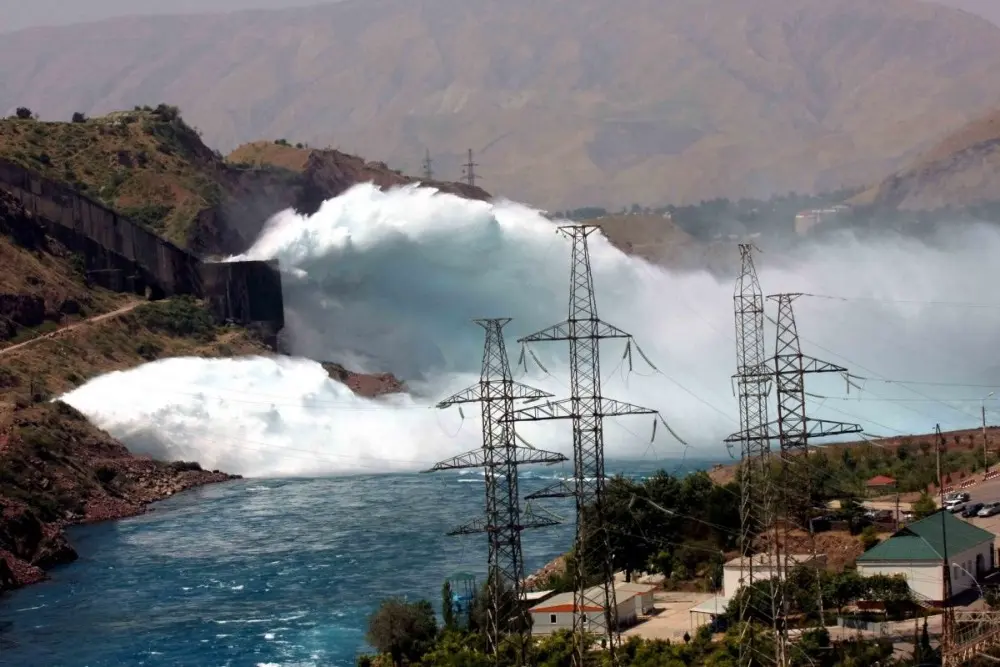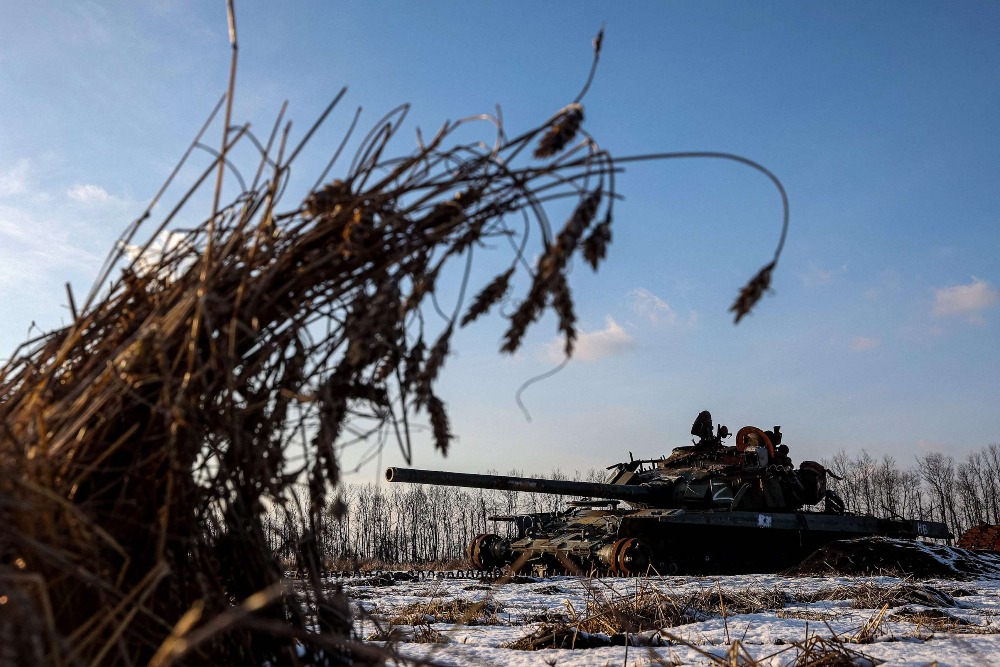
The Central Asian states, the five former Soviet republics, have increased the growth rate of their economies (according to the World Bank, recent GDP growth has been 5.5 percent per year) and nearly doubled their populations in thirty-three years since gaining their independence in 1991. According to UN projections, the total population of the Central Asian countries is expected to reach 80 million by 2030. In fact, this population level had already been reached by 2022. For instance, the population of Uzbekistan in 1991 was 19 million people, and now it exceeds 34 million. All this increases the pressure on the water-energy balance in the region and forces the authorities of these countries to seek ways to solve common problems faced by the Central Asian region.
As a result of last two winters that were abnormally cold (in the north of Kazakhstan frosts reached minus 30 degrees while sunny Samarkand recorded minus 20 degrees) the whole heat generation system in the region underwent an ordeal. In 2022, the largest coal-fired TPP in the north of Kazakhstan failed which resulted in the failure of all heating networks of Ekibastuz and complete freezing of the city’s network. In the winter of 2023, there was a major accident, an explosion that occurred at the largest coal-fired TPP in the Kyrgyz capital Bishkek with the same consequences. Smaller accidents affected TPPs and heating networks in other cities of the region. What is the reason behind such man-made processes? The main reason is that local power plants are over sixty years old and the equipment is 70 to 80 per cent worn out at all TPPs built by the USSR in the Central Asian republics. For example, the Bishkek HPP commissioned in 1961 is 97 per cent worn out in terms of equipment. This trend indicates that the number of accidents at power facilities will increasingly grow unless local authorities invest heavily in the upgrade and replacement of equipment at existing power facilities and plan to build new power plants using new technologies. In this respect, Russia has the entire range of equipment and relevant competencies to upgrade old Soviet power plants. In addition, Russia’s InterRAO has executed an agreement on building three thermal HPPs in northern Kazakhstan that will use local Ekibastuz coal as fuel (very specific coal with 40 per cent ash content).
With Kazakhstan ranking first in the world in terms of uranium ore reserves (about 45 per cent) and Uzbekistan ranking No. 7, there are opportunities for using nuclear power in the region. In the fall of this year, Kazakhstan plans to hold a referendum on the construction of a nuclear power plant near Lake Balkhash. At the same time, according to Kazakhstan’s Energy Minister A. Satkaliyev, Astana would like to build two more nuclear power plants in the north and west of the country in the future if the referendum succeeds. At the same time, the Kazakhs are inclined to execute a contract with Rosatom for the construction of NPPs featuring two power units each based on the VVER-1200 reactor. The options for NPP construction involving China and South Korea seem less attractive to the Kazakhs because, unlike Rosatom, contracts with them do not provide for the export of irradiated spent fuel for reprocessing.
In recent years, since total gas production decreased by 8 billion cubic meters per year and due to the depletion of Uzbekistan’s gas fields, Tashkent has been unable to meet its contractual obligations to supply gas into the Central Asia-China gas pipeline built and financed by Beijing. In response to Tashkent’s appeal to Moscow for help in October last year, Gazprom transferred 2 billion cubic meters of gas through one of the strings of the Central Asia-Center gas pipeline through Kazakhstan in the reverse mode within the shortest possible time.
However, the shortage of fresh water remains the most acute problem for Central Asia. According to the UN, Central Asia ranks among the five driest regions in the world and the situation continues to deteriorate. The Aral Sea has practically dried up and ceased to exist, Lake Balkhash has shoaled, the flow of the main rivers in Central Asia, Syr Darya and Amu Darya, as well as Irtysh, has decreased, and last summer hourly fresh water supply arrangements were put in place in many cities of Central Asia.
At the same time, according to the Eurasian Development Bank’s forecast, the situation with water shortages may get sharply exacerbated due to the construction of the three-hundred-kilometer-long Afghan Kosh Tepa water canal, which, once commissioned, will draw more than 10 cubic kilometers of water per year from Amu Daria which is transboundary in relation to it. At present, the total flow of Amu Daria and Syr Daria is 116 cubic kilometers. This is a resource of Central Asia countries, but it is shrinking, which entails huge risks for agriculture and food security in the region. As early as in 2028–2029 Uzbekistan, Turkmenistan and Kazakhstan may face a sustainable water deficit, which will reach 5 to 12 cubic kilometers per year. There will be chronic shortage of water regardless of the dryness of the year. If the solution of this problem is delayed for 5 years, this may give rise to absolutely unacceptable risks for the region which include lack of food, drinking water and energy and other consequences.
When delivering a speech in the fall of 2023 at the meeting of the Council of Heads of States-Founders of the International Fund for Saving the Aral Sea in Dushanbe, President of Uzbekistan Sh. Mirziyoyev was forced to admit that commissioning of Kosh Tepa could radically change the water regime and balance in Central Asia. According to him, it is not possible to solve this issue without involving Afghanistan’s representatives in the regional dialog on sharing water resources.
In order to solve irrigation water supply problems faced by agriculture in the spring and summer season, Tashkent proposes to revive the Central Asian United Water and Energy System created in the nineties by the USSR that ceased to exist after the collapse of the country. During that era, during the fall-winter period, the upstream countries, Kyrgyzstan and Tajikistan, would reduce power generation at their HPPs and accumulate water in reservoirs, receiving energy from the uniform union system to compensate for the falling volumes and, during the spring-summer agricultural season, the upstream HPPs would start operating at maximum capacity and release previously accumulated water through the dams for the downstream countries, i.e., Uzbekistan, Turkmenistan and Kazakhstan. During the years of independence, this procedure was set aside due to the energy deficit faced by Uzbekistan and Kazakhstan and their lack of opportunities to additionally supply electricity to the upstream countries.
Today, Bishkek’s idea is to revive the united water-energy system by constructing a series of small NPPs first in Kyrgyzstan and then in Tajikistan. Such plants would have the advantage of being independent of reservoir levels and fossil fuels. The construction projects are not time-consuming and provide savings since there is no need to install power lines under mountainous conditions. In 2022, a team of Kyrgyz power engineers and Rosatom representatives was set up to determine the number and parameters of future plants and their location with due consideration of safety issues given high seismic hazard existing in the mountains. It is planned to build at least three NPPs with each plan featuring two power units based on the RITM-200 reactor manufactured by the ZiO-Podolsk Machine-Building Plant that has a thermal capacity of 175 MW. Such reactors are installed in Russia’s latest series of nuclear icebreakers.
If this project is implemented and all interested Central Asian countries are connected to it, the acuteness of water-energy deficit problem faced by the region can be significantly reduced in the nearest future.














Comments